Academy of Operative Dentistry Scientific Session 2026
Thursday, February 19th
8:00-9:10am
"Beyond the Label: Understanding Active Ingredients for Tailored Toothpaste Recommendations"
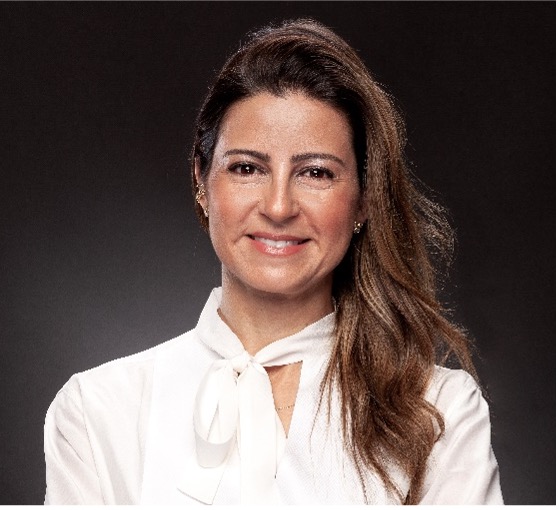
Ana Cecilia Aranha, DDS, MS
University of Sao Paulo, Brazil
Description: A wide range of toothpaste formulations with distinct active ingredients is available on the market — yet, clinical indications and chemical compositions often remain unclear to both patients and professionals. This lecture will guide dentists in navigating this complex scenario through evidence-based criteria. We will explore the main categories of active ingredients, fluoride types and concentrations, abrasivity levels, pH variation, and their impact on both dental tissues and restorative materials. More than understanding labels, the goal is to empower dentists to make personalized, strategic choices in toothpaste prescription, turning a routine habit into a powerful tool for prevention and oral health promotion.
Learning Objectives:
1) Identify and interpret the key active ingredients in toothpaste formulations, including their clinical indications, fluoride types, concentrations, pH, and abrasivity.
2) Apply evidence-based criteria to personalize toothpaste prescriptions according to individual patient needs, optimizing oral health outcomes and protecting restorative materials.
Bio: Dr. Ana Cecilia Aranha is a dentist, researcher, and educator with over 20 years of experience in restorative dentistry, laser technology, dentin hypersensitivity, and preventive care. She holds a PhD from the University of São Paulo (FOUSP), with training at the Aachen Dental Laser Institute (Germany), and is the founder of Gpec.hd – a research group dedicated to dentin hypersensitivity and laser innovations. As a speaker for global dental brands and a published author, she has delivered lectures worldwide and authored over 120 peer-reviewed articles and books, including Clinical Use of Lasers in Dentistry and Individualized Prescription of Toothpaste. Dr. Aranha is also the founder of São Paulo Dental Studio, a private clinic and national training center for dental professionals, and has led postgraduate laser dentistry programs at leading institutions in Brazil.
9:10-10:10am
“Shifting Trends in the Health Care Landscape: What Dentists Need to Know”
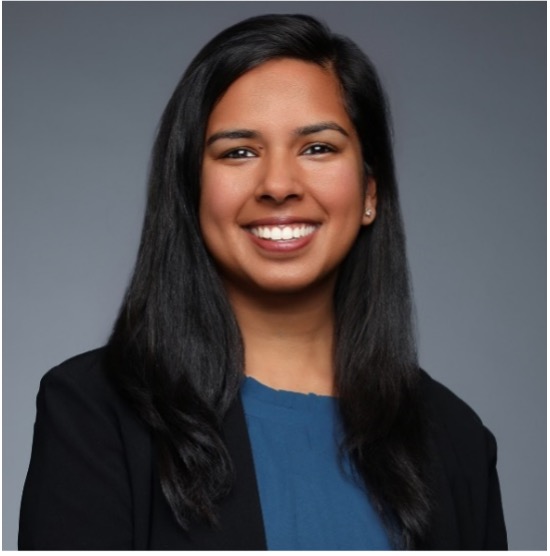
Deesha Bhaumik, PhD
American Dental Association (ADA), Chicago, IL
Description: Significant reform is underway in the U.S. health care system. An unprecedented set of changes in health care policies are underway with the Make American Healthy Again movement. This includes refocusing on prevention and upstream interventions, reductions in government spending within public programs, increased role of consumer choice, and less onerous regulations. How does this impact oral health? Our presentation will provide an overview on major trends reshaping the dental practice environment long term, as well as an update on the latest health policy developments from the current administration.
Learning Objectives:
1) Identify the major long terms trends happening in the dental care sector that are reshaping the practice environment.
2) Summarize the key reforms that are relevant for oral health under the Make America Healthy Again movement.
3) Discuss some major future opportunities for the dental profession in the shifting health care landscape
Bio: Dr. Deesha Bhaumik PhD, MS is the Senior Health Policy Analyst at the Health Policy Institute (HPI) of the American Dental Association. Prior to joining HPI, she obtained her Ph.D. from the University of Michigan in Epidemiology and her MS in Biostatistics. At HPI, she leads both research and advocacy for various projects focused on dental policy. She is responsible for both quantitative and qualitative analysis and keeps HPI informed and up to date on new oral health policies issues, particularly in Medicaid, Medicare, and the Affordable Care Act.
10:00 - 10:30
Break
10:30 - 11:30am
2026 Buonocore Memorial Lecture
"Emerging Trends and Technological Advances in Dental Adhesive Technology"
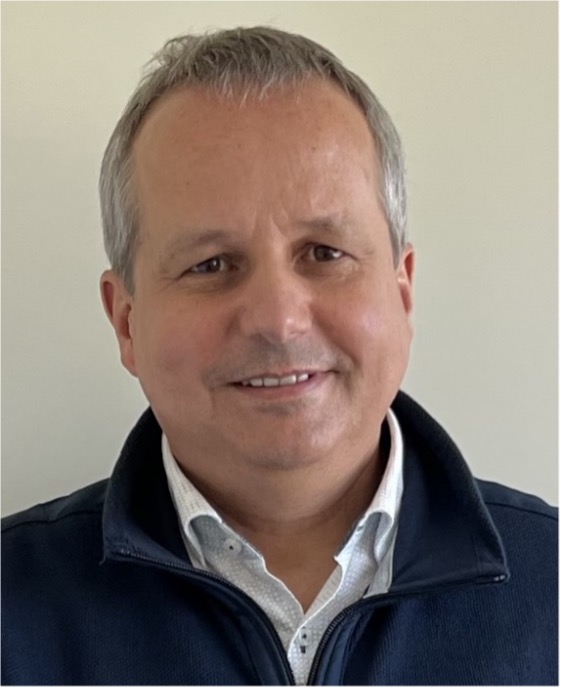
Bart Van Meerbeek, DDS, PhD
KU Leuven, Leuven, Belgium
Description: Over the past three decades, dental adhesive technology has evolved from inconsistent clinical outcomes to a level of performance that may now approach its theoretical maximum. While it remains uncertain where exactly we stand on a scale of 0 to 100, current adhesives deliver unprecedented clinical reliability. This success invites a shift in focus toward added functionalities, particularly the integration of bioactivity, to be established without compromising primary bonding. Despite excellent everyday clinical performance, long-term data beyond 10 years remain scarce, and in-vitro models continue to reveal vulnerability to hydrolytic and enzymatic biodegradation. While endogenous MMPs have long been considered central to this process, recent evidence shows their activity rapidly declines post-bonding and is further suppressed by the chemical and thermal conditions of adhesive application. Maintaining a hydrophobic seal at the adhesive-dentin interface remains essential, providing protection against the absorption of water and exogenous enzymes from saliva and biofilms. The newest generation of universal adhesives allows clinicians to tailor bonding strategies to clinical conditions, for instance, preferentially employing an etch-and-rinse approach to bond to adhesion-challenging sclerotic or corroded dentin as found in cervical lesions or under aged amalgam restorations. Conversely, highly permeable dentin, such as that seen in patients with eating disorders, may require a gentler, self-etch strategy to minimally irritate the pulp and reduce sensitivity.
Learning Objectives:
1) Examine the current state and scientific underpinnings of dental adhesive technology,
2) Critically explore the mechanisms underlying bond degradation, and
3) Highlight emerging scientific trends that will shape the next generation of bioactive and durable adhesives.
Bio: Bart Van Meerbeek obtained his DDS (1988) and PhD (1993) from KU Leuven (Belgium), followed by research fellowships in the US. He became Full Professor in 2005 and has chaired KU Leuven’s Department of Oral Health Sciences since 2020. BVM leads the BIOMAT research group, focusing on dental biomaterials including adhesives, ceramics, bioactive materials, and tissue regeneration. He has authored over 550 peer-reviewed papers (h-index: 97 WoS; 137 Google Scholar) and (co-)authored multiple publications among the most cited in dentistry. His work spans biomaterial-tissue interfaces, additive manufacturing, biocompatibility studies, and clinical trials. As recipient of numerous international awards, including the IADR Wilmer Souder Award, he has promoted 16 PhDs and co-promoted 20 more. He served key roles in CED-IADR, including as president, and has been Editor-in-Chief of the Journal of Adhesive Dentistry since 2004. He has held the Toshio Nakao Chair for Adhesive Dentistry since 2003.
11:30am - 12:20pm
“Zirconia Restorations: From Scientific Data to Clinical Management"
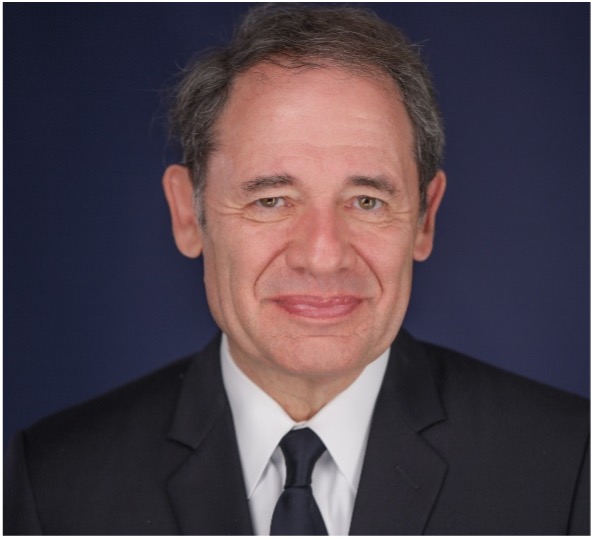
Gerard Chiche, DDS
Louisiana State University, New Orleans, LA
Description: This presentation will outline up-to-date clinical zirconia research and its clinical applications with respect to scientifically established parameters and guidelines.
Learning objectives:
1) Comparison between traditional zirconia, translucent zirconia, and strength gradient zirconia.
2) Relevant research data for routine and safe use of the different available zirconia materials
3) Precautions and clinical parameters for single units and fixed partial dentures.
Bio: Chiche is presently Clinical and Emeritus Professor at Louisiana State University School of Dentistry. He is a Past President of the American Academy of Esthetic Dentistry, and he has lectured in Esthetic Dentistry nationally and internationally in 35 countries. He is the author of two textbooks in Esthetic Dentistry published by Quintessence Publishing Co.: “Esthetics of Anterior Fixed Restorations” and “Smile Design”. He became in 2009 the first recipient of the Endowed Chair sponsored by the Thomas P. Hinman Dental Society during his tenure as Director of the Center of Esthetics and Implants at Augusta University.
12:20 – 2:00 pm
LUNCH
2:00 – 3:00 pm
“Drug-Related Problems in Operative Dentistry”
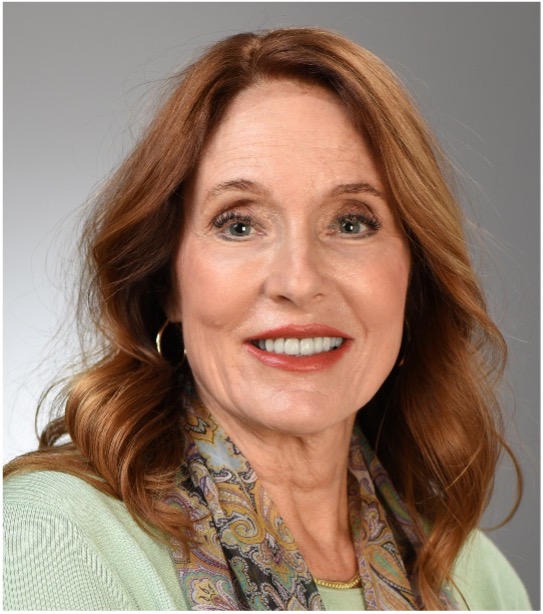
Karen A. Baker, MS
University of Iowa, Iowa City, IA
Description: Dental patients are becoming more chemically challenged, which means that clinicians must consider the dental treatment impact of chronic drug therapy or chemical exposure. This lecture will provide clinically useful information on the identification and management of intra-oral drug and chemical effects. Drug-induced effects such as bruxism, increased gag reflex, medication-related osteonecrosis of the jaw, candidosis, and most importantly, xerostomia, will be examined. Chemical contact effects such as mucosal irritation, sensitivity, and ulcerations will also be described. Extensive handouts will supplement this fast-paced lecture with emphasis on practical clinical management of medicated dental patients.
Learning Objectives:
1) Describe the most common causes of xerostomia, taste disorders, orofacial movement disorders, oral pigmentation, medication-related osteonecrosis of the jaw (MRONJ), chemical sensitivity, and mucositis.
2) Discuss dental management strategies for xerostomia, halitosis and mucositis.
3) List four chronic medications that limit vasoconstrictor dosage.
Bio: Professor Karen Baker has been on the Dental College faculty at the University of Iowa for over 40 years and occupies a unique role in dental practice and education. She is a clinical pharmacist with a Master’s degree in clinical pharmacology and therapeutics and is focused on patient-specific dental drug therapy. She has given well over 1000 invited programs nationally and internationally and holds memberships in many dental and clinical pharmacology and therapeutics organizations. Her dental education-based pharmacy and drug therapy consultation center is the only one in the United States. She has authored many articles and abstracts and lectures extensively in pre-doctoral and graduate courses at the University of Iowa.
3:00 – 4:00 pm
“Intraoral Data Acquisition: Parameters to Improve Accuracy"
James B. Summit Memorial Lecture
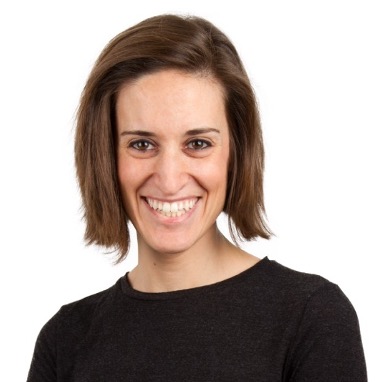
Marta Revilla Leon, DDS, MSD, PhD
KOIS Center, Seattle, WA
Description: Digital dentistry is not intraoral scanners, 3D printers, or CAD programs - these are just tools. The quest is more about how to create digital workflows to be efficient and reliable, and less about reshaping conventional procedures with digital tools. Dental professionals aim to balance the new digital possibilities with fundamental prosthodontic concepts and evidence-based procedures. Additionally, the continuous development and enhancements of technology challenge dental professionals to stay up to date. This presentation will discuss the factors affecting intraoral data acquisition, optimize clinical results, and identify effective methods.
Learning Objectives:
1) Identify the main data acquisition methods and the elements that can influence the accuracy of Intraoral Digital Scans
2) Understand the impact of operator-related factors on the accuracy of digital data
3) Analyze the patient-related factors and their influence on intraoral data acquisition methods.
Bio: Dr. Marta Revilla is Faculty and Director of Research and Digital Dentistry at the Kois Center. Dr. Revilla-León obtained her PhD in Prosthodontics and Digital Dentistry at ACTA University in Amsterdam. She obtained her MSD in prosthodontics at the University of Washington in Seattle and an MS in Esthetic Dentistry at the Complutense University of Madrid. Dr. Revilla-León is a specialist in digital dentistry with more than 200 publications in peer-reviewed dental journals in the last 5 years related with facial and intraoral scanning methods, virtual patient integration, digital implant scans, photogrammetry systems, polymer, metal, and ceramic 3D printing, CAD SWs, and artificial intelligence for dental applications. Currently, Dr. Revilla-Leon is also an Affiliate Faculty in the Graduate in Prosthodontic Program at the University of Washington in Seattle and in the Graduate Prosthodontics Program at Tufts University in Boston.
4:00 – 5:00 pm
“Simplified Resin Composite Systems and Their Clinical Implications “
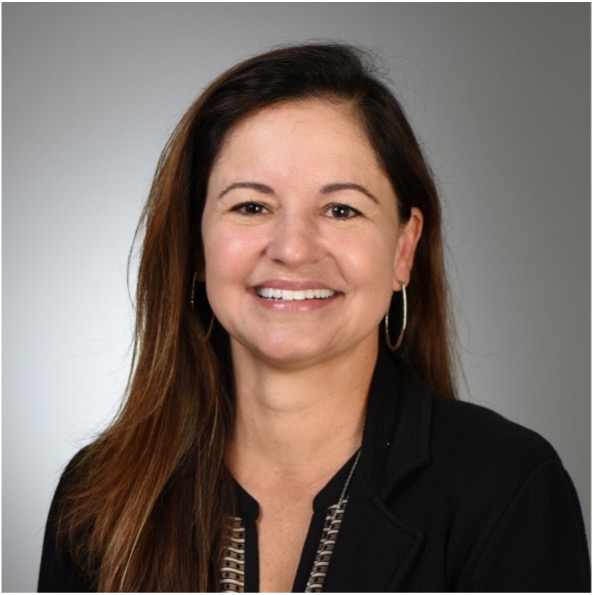
Erica Teixeira, DDS, PhD
Texas A&M University College of Dentistry, Dallas, TX
Description: Simplified-shade resin composite systems are designed to match a wide range of tooth shades using fewer colors by utilizing structural color and enhanced translucency. Their ease of use and improved blending ability have increased the popularity of resin composite restorations in both anterior and posterior regions. This course will explore current evidence, including findings from a randomized clinical trial, to assess the performance and properties of single-shade systems. Clinical advantages, limitations, and case selection considerations will be discussed, with a focus on optimizing patient outcomes. Attendees will gain a deeper understanding of how these systems compare to traditional composites and how to integrate them effectively into daily clinical practice.
Learning Objectives:
1) Describe the characteristics and properties of the material.
2) Assess the aesthetic and clinical performance of single-shade or simplified resin composites.
3) Evaluate Patient-Centered Outcomes through patient satisfaction results
Bio: Dr. Erica Teixeira is Professor and Department Head of Comprehensive Dentistry at Texas A&M University College of Dentistry. Previously, she served as Departmental Executive Officer of Operative Dentistry at the University of Iowa, where she led clinical education and maintained a dental practice focused on minimally invasive, person-centered care. A member of Omicron Kappa Upsilon and a Fellow of the International College of Dentists, she is also an alumna of the Executive Leadership in Academic Medicine (ELAM) program. Dr. Teixeira serves on the ADA Council of Scientific Affairs, is Vice-chair of the ADA Seal committee, and Vice-President of the Women in Science Network of the International Association for Dental Research. She teaches pre-doctoral students and residents, is a peer reviewer for dental journals, and actively engages in clinical research. Her collaborative work spans multiple disciplines and has contributed to funded research initiatives supporting innovation in dental science and education.
Friday, February 20th
8:30 – 9:30
“Longevity of Dental Implant Therapy and Its Future”
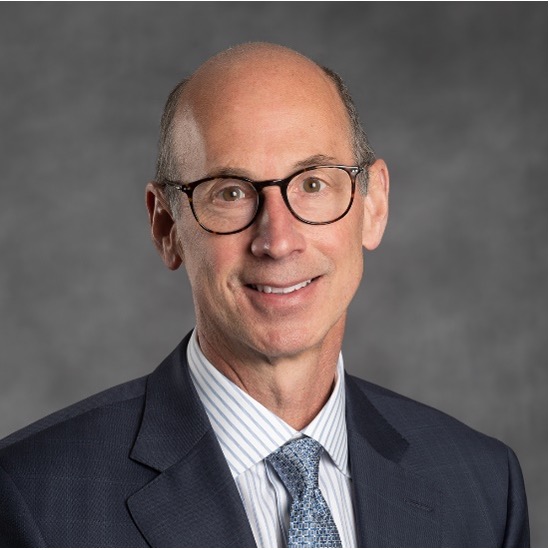
Lyndon Cooper, DDS, PhD
Virginia Commonwealth University, Richmond, VA
Description: This presentation will highlight much of what is presently known regarding the longevity of dental implant therapy and outcomes related to patient care. The keys to longevity of dental implant therapy include 1) careful treatment planning, 2) precise execution of the plan, 3) a prescribed supportive implant therapy plan, and 4) managing the patient's changing ability to maintain dental implant health. Information and illustrations of each of these four keys will be presented in a case-based manner. A comprehensive and sustained plan is required to assure the best possible outcomes of dental implant therapy."
Learning Objectives:
1) Recognize four keys to longevity of dental implant therapy success
2) Understand implant and treatment-based causes of premature implant failure, and
3) Appreciate the importance of individual patient biology/physiology in the ultimate success of dental implant therapy.
Bio: Dr. Lyndon Cooper is the Dean of the Virginia Commonwealth University’s School of Dentistry and Harry Lyons Professor of Prosthodontics. He previously served as Associate Dean for Research (UI Chicago), Chairperson and Graduate Program Director (UNC Chapel Hill), and President of the American College of Prosthodontists (2010). Dr. Cooper remains active in teaching, research, and patient care and is focused on enhancing dental education, providing for dental therapeutic excellence, and improving access to oral health care.
9:30 –10:30 am
“Fluoride hesitancy: how to spot, diagnose, and manage it”
2026 Cariology Lecture
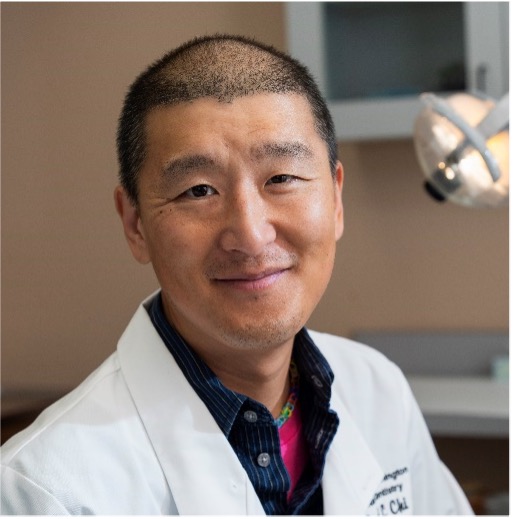
Donald L Chi, DDS, PhD
University of Washington, Seattle, WA
Description: Fluoride is one of the few evidence-based therapies known to prevent tooth decay. However, recent data indicate that a growing number of parents and communities are hesitant about fluoride, with a substantive number of parents who refuse it during dental visits. In this program, Dr. Chi will outline the history of fluoride hesitancy, discuss recent epidemiological data on prevalence, describe the reasons why parents are hesitant about fluoride, and provide tips on how to manage hesitancy in clinical practice.
Learning Objectives:
1) Quantify how common fluoride hesitancy is in practice
2) Describe reasons why parents are hesitant about fluoride
3) Outline clinical strategies to address fluoride hesitancy
Bio: Donald L. Chi is professor and the Lloyd and Kay Chapman Endowed Chair of Oral Health at the University of Washington School of Dentistry (Seattle, USA), where he is Associate Dean for Research. He is dual board-certified in pediatric dentistry and dental public health. His NIH-funded research program focuses on understanding the causes of oral health inequities and addressing them through community-based behavioral interventions and evidence-based policies. He received the 2017 IADR Distinguished Scientist Award and was named Pediatric Dentist of the Year by the American Academy of Pediatric Dentistry in 2018. Dr. Chi is Editor-in-Chief of the International Journal of Paediatric Dentistry. He teaches public health and provides dental care as a staff pediatric dentist at the Odessa Brown Children’s Clinic in Seattle.
10:30 – 11:00 am
BREAK
11:00 – 12:00 pm
“What are you Operative Dentistry and Why are they saying those nasty things about you? ”
Tucker Lecture of Excellence
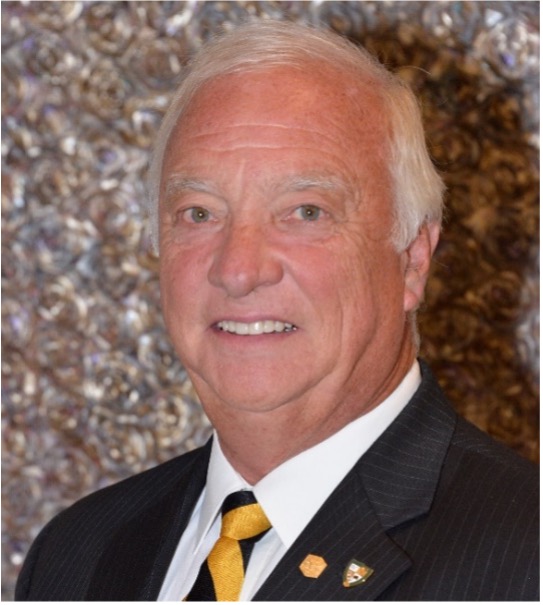
Craig Bridgeman, DMD
Private Practice, Boone, NC
Description: Today's practice of Operative Dentistry faces many challenges and opportunities. With constantly emerging discoveries in materials and technologies, our dental schools are faced with difficult and demanding choices about what mandatory, optional, and desirable skills and techniques should be taught. Are the time-honored traditions of cavity preparation being abandoned in favor of reliance upon newer technologies? Are timeproven methodologies of the past on the verge of irrelevance and obsolescence? What can be done to preserve them?
Learning Objectives:
1) To understand and appreciate the evolution of the discipline of Operative Dentistry
2) To gain an appreciation of the principles of tooth preparation as applied to today's materials and techniques
3) To recognize the value of the clinical study club in promoting excellence
Bio: Dr. Bridgeman was a member of the first graduating class of the University of Florida College of Dentistry in 1976. Since then, he has been in the private practice of Restorative Dentistry in Boone, NC. His professional affiliations include The Academy of Operative Dentistry, American Academy of Gold Foil Operators, American Academy of Restorative Dentistry, the American Board of Operative Dentistry, and the Academy of RV Tucker Study Clubs. He has been a member of the Hollenback-Medina Operative Dentistry Seminar since 1978, and became its mentor in 2016, when the club elected to affiliate with the Tucker Academy as club #71. Dr. Bridgeman also mentors the West Virginia Student Gold Club at West Virginia University.
Stand-by Essayist
"Optimizing Adhesive Luting Protocols for Ceramic Restorations"
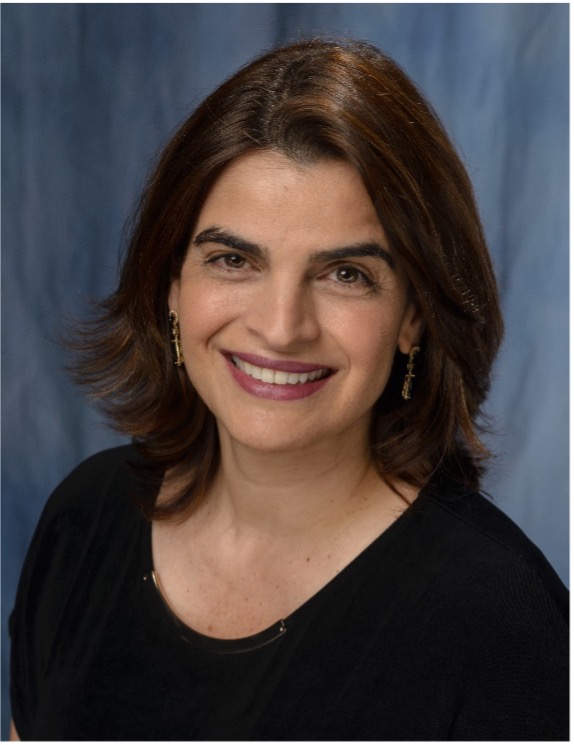
Patricia Pereira, DDS. PhD
Professor, University of Florida, Gainesville, FL
Description: Optimizing adhesive luting protocols is essential to the long-term clinical success of ceramic restorations, as it directly impacts bond strength, durability, and resistance to functional aging. Evidence shows that factors such as surface treatments, material selection, preparation design, and luting techniques significantly influence clinical outcomes, with resin cements and luting protocols contributing to improved survival rates. In addition to restoration adaptation, proper bonding enhances marginal integrity, reduces failure rates, and supports esthetic longevity. However, challenges like technique sensitivity, hypersensitivity, and patient-specific variables require a case-by-case approach. A well-calibrated, evidence-based protocol remains critical to maximizing restoration performance in clinical practice.
Learning Objectives:
1) Identify factors that influence bond strength and long-term success of ceramic restorations
2) Describe current adhesive luting protocols for different types of ceramic restorations
3) Apply evidence-based guidelines to optimize luting procedures in clinical practice.
Bio: Patricia Pereira earned her D.D.S. in 1993 from the University of the Planalto Central in Brazil, followed by a Ph.D. in 1998 and a post-doctoral fellowship in 2000 from Tokyo Medical and Dental University, Japan. From 2000 to 2006, she was an Assistant Professor at UNC-Chapel Hill, where she taught pre-dental and advanced education courses while conducting research. She returned to Brazil from 2006 to 2015 to raise her family, during which time she joined the University of Brasília as a professor and co-founded Dentaire Dental Clinic and Integrato Specialized Continuing Education. In 2015, Patricia joined the University of Florida College of Dentistry as a Clinical Associate Professor. She is now a Clinical Professor at UFCD, Graduate Program Director in Operative and Esthetic Dentistry, and Associate Dean for Academic Affairs. She has over 120 publications and is a member of several professional associations.
Clinic Briefings
1:45 - 4:45 PM
Increasing the Vertical Dimension with No-Prep 3D Printed Restorations
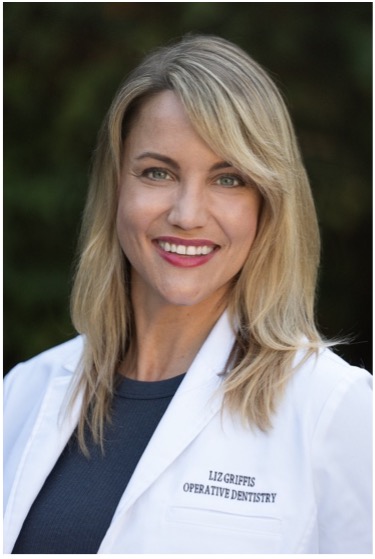
Liz Griffis, DMD, MS
United States Navy, NMC San Diego
lizzyagriffis@gmail.com
Description: A 3-year case study following of a patient whose vertical dimension was increased with no prep 3D printed restorations. This was accomplished to create restorative space for anterior teeth with severe acid erosion. An introduction to the technology and dental materials, an overview of the patient's initial presentation, restorative workflow and design process, and final photos and 3 year follow up photos will be presented. Pros/cons of 3d printed restorations will be discussed.
Learning Objectives: 1) Discuss the technology and dental materials available for 3D printing. 2) Discuss the patient selection for conservative printed onlay alteration of vertical dimension. 3) Discuss pros/ cons of 3D printed restorations as long term provisionals or permanent restorations
Atypical Occlusal Changes in Arthritis: Case Report of Acquired Posterior Open Bite
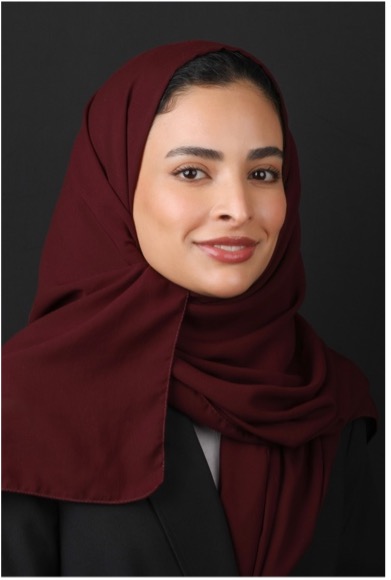
Aljawharah Alsheodkhi, DDS
Resident
University of Michigan
aljohara.shed@gmail.com
Description: Temporomandibular joint (TMJ) pathology may lead to open bite due to condylar displacement; however, sudden posterior open bite (POB) is rare. This report presents a unique case of bilateral posterior open bite secondary to arthritis, focusing on the restorative treatment approach and highlighting clinical management of this uncommon occlusal manifestation.
Learning Objectives: 1) Understanding the most clinical manifestation of TMJ displacement due to arthritis; 2) Understands the management, treatment and follow up that needs to be completed by clinicians to provide the best care for patient with this chronic condition
Systematic approach to enhance shade matching and shade replication
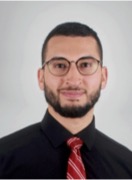
Ahmad Alkhazaleh BDS, MS
Assistant Professor
University of Iowa
ahmad-alkhazaleh@uiowa.edu
Description: This presentation introduces a five-stage methodology designed to enhance practitioners’ proficiency in shade matching and replication. The process begins with the fabrication of standardized composite discs using resin composites from each practitioner’s own clinical inventory to explore how opacity, hue, chroma, and value influence optical behavior. These shade tabs are then digitized for objective color analysis within the CIE Lab system. As the presentation progresses, participants will examine the effects of composite layering and layer thickness control. The session concludes with a capstone project that integrates all learned skills to produce lifelike, polychromatic restorations
Learning objectives: 1) Identify existing gaps in dental color education and highlight opportunities to enhance practitioners’ skills in shade selection and replication; 2) Implement a systematic approach to help practitioners understand the optical properties of restorative materials within their clinical inventory, fostering confidence in minimally invasive adhesive dentistry; 3) Incorporate digital color analysis tools to improve objectivity, accuracy, and consistency in shade evaluation.
Body Dysmorphic Disorder: Underrecognized Risk in Esthetic Dentistry
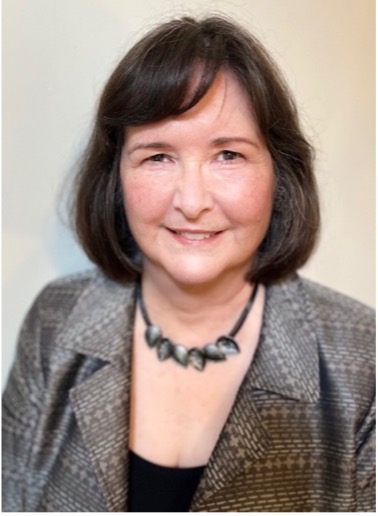
Jan Mitchell, DDS., MEd
Augusta, Georgia
drjanmitchell@gmail.com
Description: Body Dysmorphic Disorder (BDD) is a psychiatric disorder where obsessive focus on perceived defects causes significant stress and may lead to seeking esthetic care. However, treatment of these patients is highly likely to leave the patient dissatisfied and can lead to worsening BDD and/or legal action. Under-recognized in dentistry, screening is key to identifying these patients to mitigate potential risk.
Learning Objectives: 1) Describe prevalence and demographics of body dysmorphia. 2) Recognize common signs, symptoms in patients presenting for esthetic dental care and predict treatment outcomes for patients with BDD and implement legal protections where appropriate. 3) Describe how to implement systematic screening protocols for patients seeking esthetic procedures, including the use of validated screening questionnaires. 4) Describe how to care across healthcare disciplines to diagnose and manage BDD.
Optical Mastery in Anterior Veneers: Leveraging Emax Impulse 01 for Opalescence and Translucency
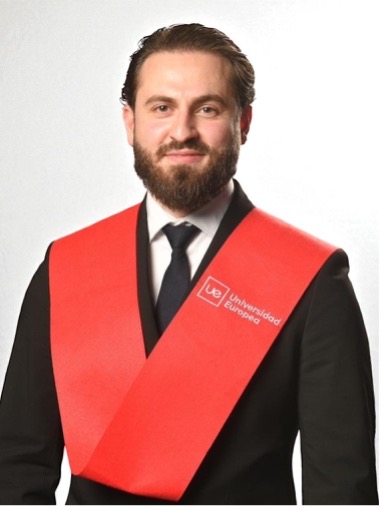
Yarjanek Bedros, DDS
Resident
University of Southern California (USC)
bedros@usc.edu
Description: This case report demonstrates the use of ultra-thin Emax Impulse 01 veneers to restore four maxillary anterior teeth. Emphasizing opalescence and translucency, the presentation explores lithium disilicates enamel-like optical properties, material selection, and adhesive protocols, illustrating how light interaction enhances natural aesthetics in conservative anterior restorations.
Learning Objectives: 1) Understand the optical properties of lithium disilicate ceramics, including opalescence, translucency, and value, and their role in mimicking natural enamel; 2) Identify key clinical considerations in material selection, shade analysis, and cement choice for ultra-thin anterior veneers (
Managing Deep Subgingival Lesions with Deep Margin Elevation: Evidence and Technique Overview
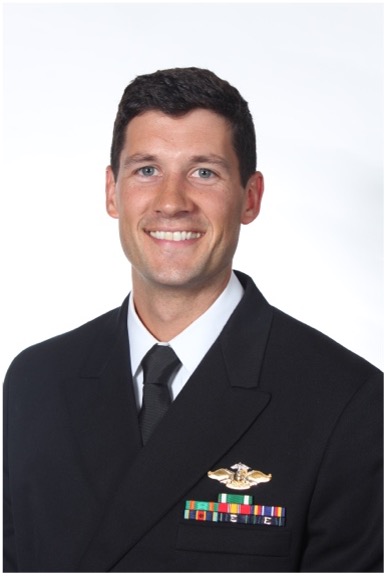
Hank Heeter, DDS, MS
United States Navy, MCRD Parris Island
heeterh@gmail.com
Description: Deep Margin Elevation (DME) offers a minimally invasive alternative for managing deep subgingival lesions. By elevating margins to a supragingival level, DME improves restoration success, reduces tissue loss, and enhances patient outcomes. Backed by strong clinical evidence, it simplifies treatment while preserving biology and saving time and cost, making it a valuable tool in modern restorative dentistry.
Learning Objectives: 1) Understand the indications for Deep Margin Elevation; 2) Be able to describe the benefits and drawbacks of different materials used for Deep Margin Elevation; 3) Describe outcomes from the literature as it relates to restoration fracture resistance, periodontal impact, and clinical success with Deep Margin Elevation
Minimally Invasive Treatment of Fluorosis-Including a Case Review
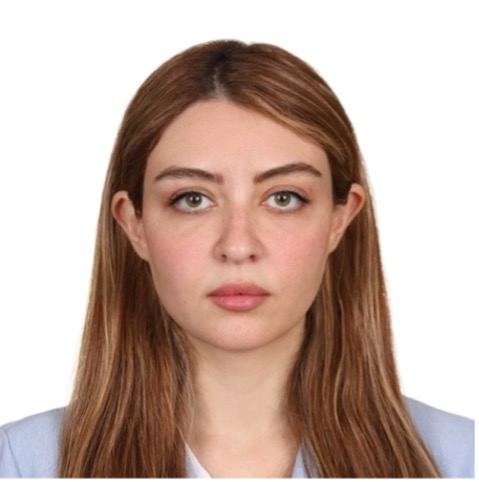
Niusha Zare, DDS
Resident
University of Southern California (USC)
nzare@usc.edu
Description: This presentation explores minimally invasive strategies for managing dental fluorosis, emphasizing esthetic zone preservation and evidence-based approaches. A recent clinical case will be reviewed to illustrate a stepwise treatment plan using bleaching, resin infiltration, and microabrasion. Current literature (2020-2025) and patient-centered outcomes will be highlighted to guide optimal decision-making in modern esthetic dentistry.
Learning objectives: 1) Understand the clinical classification and esthetic implications of dental fluorosis; 2) Evaluate minimally invasive treatment modalities such as bleaching, resin infiltration, and microabrasion based on current evidence; 3) Apply a stepwise, case-based approach to managing fluorosis in the esthetic zone.
